Astrocytic gap junctions remain open during ischemic conditions
- PMID: 9502812
- PMCID: PMC6793088
- DOI: 10.1523/JNEUROSCI.18-07-02520.1998
Astrocytic gap junctions remain open during ischemic conditions
Abstract
Gap junctions are highly conductive channels that allow the direct transfer of intracellular messengers such as Ca2+ and inositol triphosphate (IP3) between interconnected cells. In brain, astrocytes are coupled extensively by gap junctions. We found here that gap junctions among astrocytes in acutely prepared brain slices as well as in culture remained open during ischemic conditions. Uncoupling first occurred after the terminal loss of plasma membrane integrity. Gap junctions therefore may link ischemic astrocytes in an evolving infarct with the surroundings. The free exchange of intracellular messengers between dying and potentially viable astrocytes might contribute to secondary expansion of ischemic lesions.
Figures
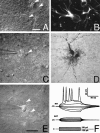

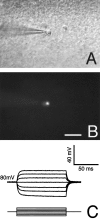
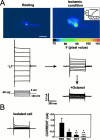




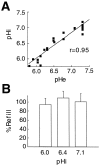
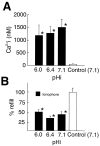


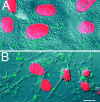

Similar articles
-
Gap junction blockage limits intercellular spreading of astrocytic apoptosis induced by metabolic depression.J Neurochem. 2005 Aug;94(4):1111-23. doi: 10.1111/j.1471-4159.2005.03241.x. J Neurochem. 2005. PMID: 16092948
-
Immunorecognition, ultrastructure and phosphorylation status of astrocytic gap junctions and connexin43 in rat brain after cerebral focal ischaemia.Eur J Neurosci. 1998 Jul;10(7):2444-63. doi: 10.1046/j.1460-9568.1998.00253.x. Eur J Neurosci. 1998. PMID: 9749772
-
Identification of second messengers that induce expression of functional gap junctions in microglia cultured from newborn rats.Brain Res. 2002 Jul 12;943(2):191-201. doi: 10.1016/s0006-8993(02)02621-5. Brain Res. 2002. PMID: 12101041
-
Gap junction-mediated bidirectional signaling between human fetal hippocampal neurons and astrocytes.Dev Neurosci. 2001;23(6):420-31. doi: 10.1159/000048729. Dev Neurosci. 2001. PMID: 11872943
-
Opening of astrocytic mitochondrial ATP-sensitive potassium channels upregulates electrical coupling between hippocampal astrocytes in rat brain slices.PLoS One. 2013;8(2):e56605. doi: 10.1371/journal.pone.0056605. Epub 2013 Feb 13. PLoS One. 2013. PMID: 23418587 Free PMC article.
Cited by
-
Changes in the composition of brain interstitial ions control the sleep-wake cycle.Science. 2016 Apr 29;352(6285):550-5. doi: 10.1126/science.aad4821. Science. 2016. PMID: 27126038 Free PMC article.
-
Connexins, Pannexins and Gap Junctions in Perinatal Brain Injury.Biomedicines. 2022 Jun 18;10(6):1445. doi: 10.3390/biomedicines10061445. Biomedicines. 2022. PMID: 35740466 Free PMC article. Review.
-
Crosstalk of Astrocytes and Other Cells during Ischemic Stroke.Life (Basel). 2022 Jun 17;12(6):910. doi: 10.3390/life12060910. Life (Basel). 2022. PMID: 35743941 Free PMC article. Review.
-
Protoplasmic astrocytes in CA1 stratum radiatum occupy separate anatomical domains.J Neurosci. 2002 Jan 1;22(1):183-92. doi: 10.1523/JNEUROSCI.22-01-00183.2002. J Neurosci. 2002. PMID: 11756501 Free PMC article.
-
Traumatic brain injury in vivo and in vitro contributes to cerebral vascular dysfunction through impaired gap junction communication between vascular smooth muscle cells.J Neurotrauma. 2014 Apr 15;31(8):739-48. doi: 10.1089/neu.2013.3187. Epub 2014 Jan 31. J Neurotrauma. 2014. PMID: 24341563 Free PMC article.
References
-
- Anders JJ. Lactic acid inhibition of gap junctional intercellular communication in in vitro astrocytes as measured by fluorescence recovery after laser photobleaching. Glia. 1988;1:371–379. - PubMed
-
- Arellano G, Ramon F, Rivera A, Zampighi G. Calmodulin acts as an intermediary for the effects of calcium on gap junctions from crayfish lateral axons. J Membr Biol. 1988;101:119–131. - PubMed
-
- Astrup J, Symon L, Branston N, Lassen N. Cortical evoked potential and extracellular potassium and hydrogen at cortical levels of brain ischemia. Stroke. 1977;8:51–57. - PubMed
-
- Astrup J, Siesjo B, Symon L. Threshold in cerebral ischemia—the ischemic penumbra. Stroke. 1981;12:723–725. - PubMed
Publication types
MeSH terms
Substances
Grants and funding
LinkOut - more resources
Full Text Sources
Other Literature Sources
Miscellaneous
